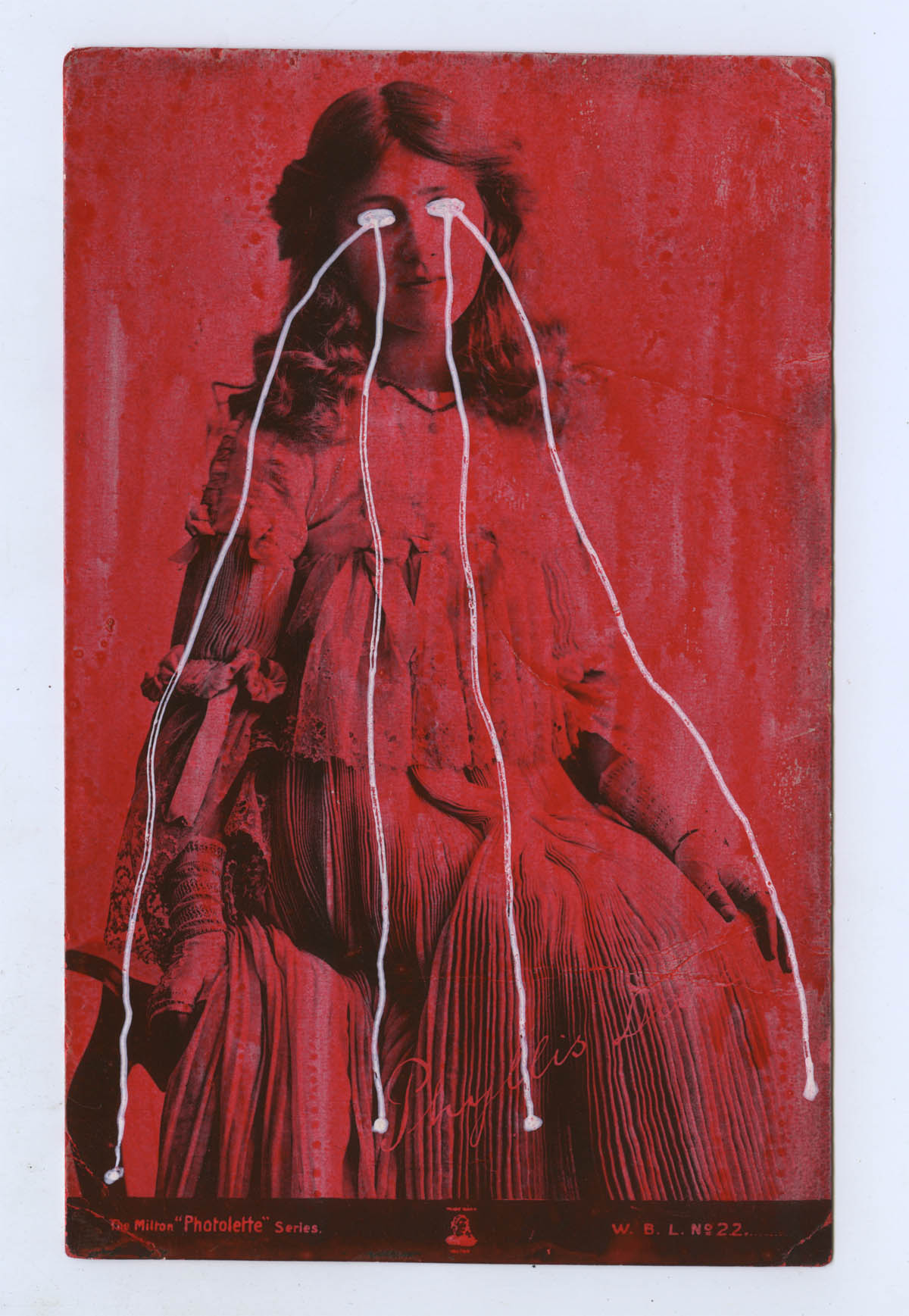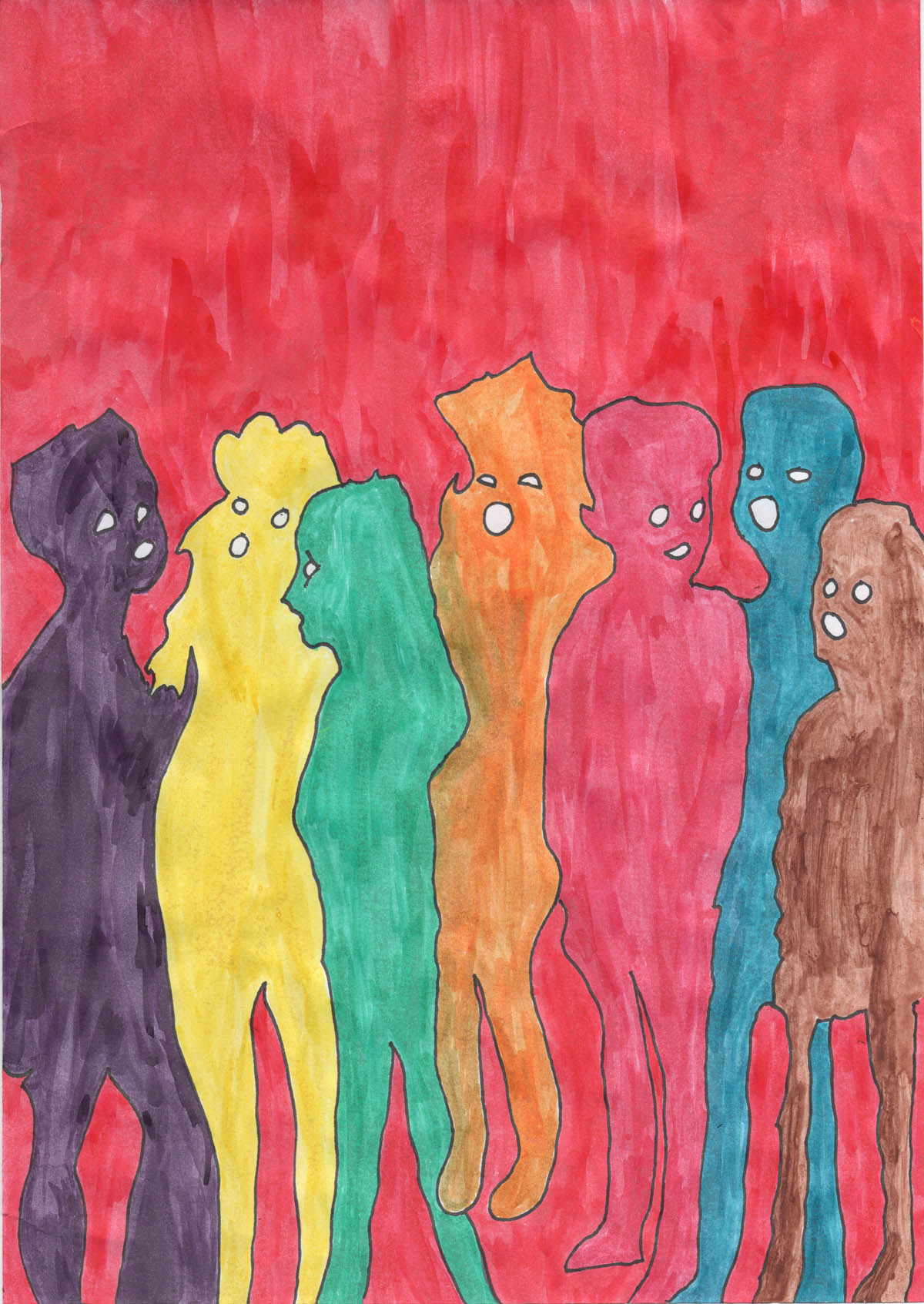
I had never heard of British poet/musician David Tibet nor his paramusical band Current 93, until Cal State Fullerton curator Jacqueline Bunge suggested I Google him. Done in preparation for “Invocation of Almost” at the Nicholas & Lee Begovich Gallery, that random internet search turned into a rabbit hole of the recherché: Tibet has worked with the band Coil, musician Nick Cave, Crass front man Steve Ignorant, folk musician Shirley Collins, and body provocateur Genesis P-Orridge’s Psychic TV, among others. He is considered an outsider artist; publishes rare books; was influenced by occultist Aleister Crowley; and has studied gnosticism, Buddhism, and Christianity, as well as ancient Semitic and Egyptian languages. He’s a bit of an intellectual enigma, an artist who doesn’t do many interviews and has been quoted as saying, “All you need to know is in my work.”
Bunge first came to Tibet through his art, not his music, enamored with the work on his album covers. Her partner and co-curator, Shaun Richards, was already a fan of the artist’s music, so he was able to tell her about that side to Tibet. Bunge reached out to Tibet, met with him in England, and after two years of devotion, their friendship has given Orange County the stunning “Invocation,” a show so expansive it is something more like an experience than an exhibition, quite unlike anything you’re likely to see anywhere else any time soon.
Under a dim, haunting red light, Tibet’s blocky black-and-white African fetishes look as if they’ve been doused in crimson, their faces remade by the artist into smiles and lop-sided triangle eyes. Another red-light section is dedicated to a woman in silhouette and haphazardly drawn barns with red roofs, both images inspired by an unsolved killing from the 1940s and a notorious murder and execution in 1827 England. There are a multitude of carte de visite and antique cabinet-card photographs, the eyes whited out, long lines inked from the sockets to small tear-like circles below, or scrawling above them, as if a soul were leaving the body.

Tibet’s pictures often look as if they were drawn by a child suffering from night terrors: eerie, disembodied heads and faces, restlessly scrawled in white ink on black backgrounds like graffiti; bold, bright color portraits of the Antichrist; skull faces mouthing a toothy scream, black holes as eyes; a crown decorated with upside-down crosses. The demon Pazuzu makes an appearance, overseeing a multihued choir of children singing in Hell. Blood drips like rain on another. It’s the gentleness of that grade-school apocalypse that seems to be the undercurrent of much of the show’s themes: Tibet’s emotional attachment to demonic imagery is filtered through an “odd Christianity” (his words), offering us an endearingly ambivalent desire for the end to hurry up and fucking happen . . . or just shut up and stop taunting us.
Outsider artists are generally so out of the mainstream they take for granted the many things they know and understand, with mania, isolation, esoteric education, drug use, mental illness, abuse, religious devotion and intellect informing and often blurring their vision. For those of us who haven’t walked the same path, it can be distressing and alienating unless put into context. Compounding the issue, Bunge and Richards have eliminated the standard personal interpretations, forcing any dialogue to be solely between the artist, his audience and their imaginations. This is a good thing, to my mind, but Tibet’s vagaries—visually, musically, intellectually—are difficult to parse without the extended hand of more knowledge about him than I have at my disposal, even after spending a day on search engines.
If Tibet is puzzling through spiritual matters, as it’s implied, then there are many of us on a similar journey who’d welcome enlightenment, but his is such a personal lifelong vision that the open book of illumination doesn’t seem to be his intent. While certainly coming from somewhere not readily accessible, transcendent in a way that is moving and more than a little unsettling, if you’re looking for something more concrete, this isn’t the place for you. Tibet’s poetry and hand-written lyrics, examples of which lie in the glass cases of ephemera at the back of the gallery, are far more enlightening than the hallucinatory drawings.

Is the eminent sadness filling the space the real deal, or is it just another performance, with its moribund projected images, mood lighting and haunting musical soundtrack manipulating the viewer? In the end, I don’t think Tibet is trying to pull anything over on anyone—the sophisticated indirectness of his work seems consistent with his personality. But whether he’s legitimately on some kind of obscure spectrum of outré unconsciousness, I also can’t say for sure.
“Invocation of Almost: The Art of David Tibet” at Cal State Fullerton’s Nicholas & Lee Begovich Gallery, 800 N. State College Blvd., Fullerton, (714) 278-2011; www.fullerton.edu/arts/art/galleries/begovich_gallery/invocation-of-almost_detail.php. Open Mon.-Thurs. & Sat., noon-4 p.m. Through May 25. Free, but you’ll have to pay for parking.
Dave Barton has written for the OC Weekly for over twenty years, the last eight as their lead art critic. He has interviewed artists from punk rock photographer Edward Colver to monologist Mike Daisey, playwright Joe Penhall to culture jammer Ron English.

